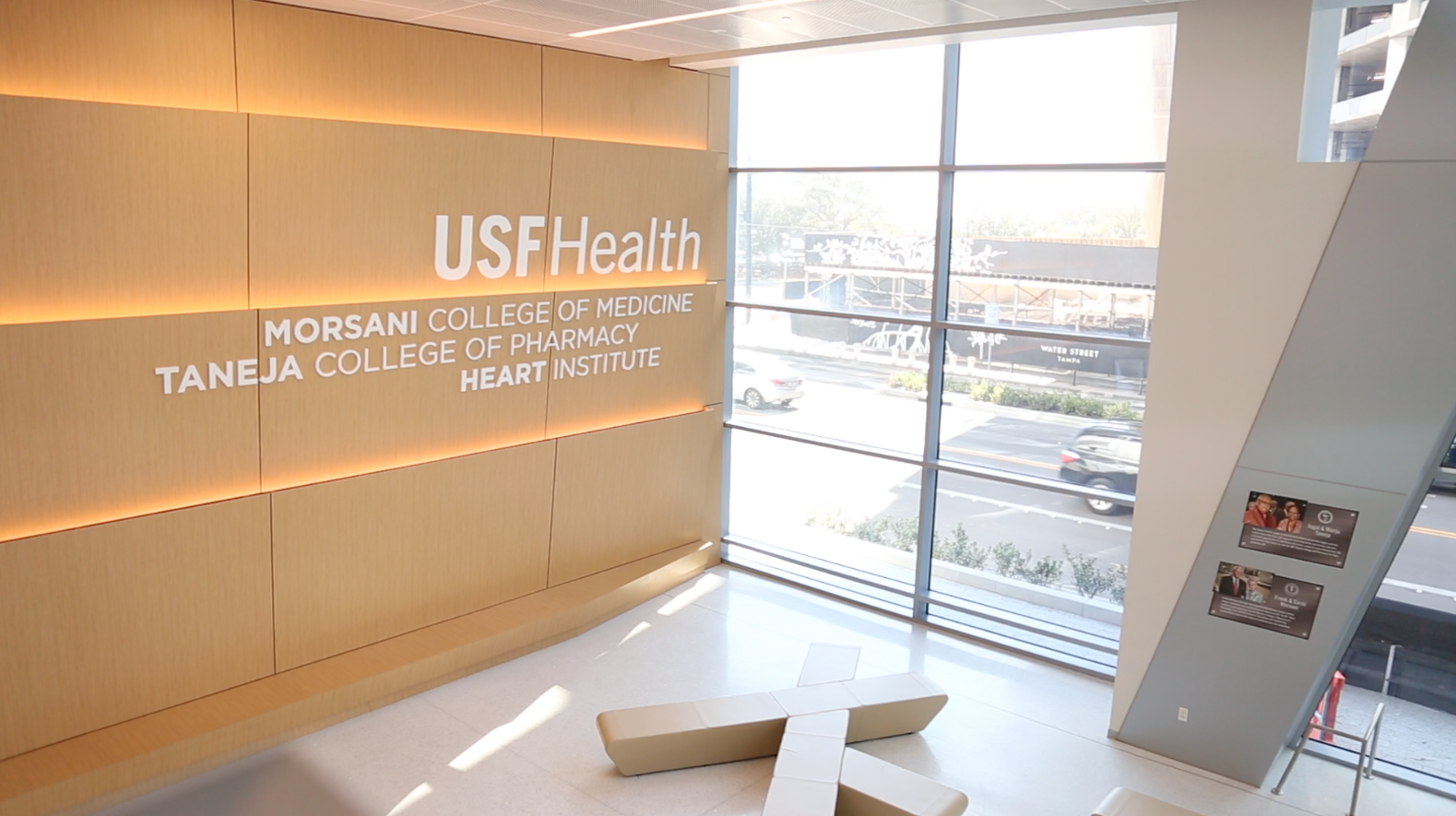New Morsani College of Medicine worth the wait for students

In Downtown Tampa, USF medical students are walking down hallways with paint fresher than some of their lab coats.
USF Health students are over a week into their M.D. program at the newly opened Morsani College of Medicine located in Tampa’s Water Street district. Students were not only eager to catch a glimpse of the $110 million facility but were ready to explore all that it has to offer.
Gary Rabenold, a first-year medical student, had only seen the outside of the building from the promotional advertising but he said he was pleasantly surprised when he received a tour a couple of weeks ago.
“We knew what it was going to look like from the outside but we had no clue about the inside,” Rabenold said. “We heard a lot about how there was going to be an auditorium on the second floor and how it can support all this important research on the top floor but we didn’t know how that was going to translate into how the building actually looks.”
P.A. student Javen Threatt was most surprised by the magnitude of the 395,000-square-foot facility.
“As soon as you get out of the ground level from the parking lot, you look up and you see this massive building,” Threatt said. “I believe they compared the steel to the weight of a jumbo jet.”
The building is made up of 47,000 tons of concrete, which is comparable to the weight of 155 Boeing 747 jets, according to the USF Health website.
The 13-story building also shares a space with Tampa General Hospital where students will collaborate on projects such as urgent care, cardiology and imaging.
Ariel Perry-Mills, a first-year medical student, said she has enjoyed exploring the downtown area during her breaks from studying.
“I didn’t realize how much is out here until I started walking around and exploring last week,” Perry-Mills said. “We’re close to Crunch [Fitness] and Channelside is right across the street. You can go and study by the cruise ships, so that’s pretty cool.”
On the other hand, some students have found the Downtown Tampa location frustrating.
“Traffic and parking were kind of horrendous, to be honest, but I’m sure they will eventually find new solutions to make the building easier to access,” Threatt said.
P.A. student Rachel Hileman also had issues with parking this week, but she said it’s worth it given the location.
“Parking has been difficult but at the end of the day, what’s parking compared to all the other things available,” Hileman said.
Students from all over aspects of USF Health have expressed an interest in the technology used throughout the building.
The largest technological change has been the incorporation of Microsoft Teams in almost every room in the new building. It is predicted by next fall that the software will be implemented in the curriculum, according to Deborah DeWaay, associate dean for undergraduate medical education.
The use of Microsoft Teams will allow professors to teach patient scenarios in a more collaborative manner with the use of video chat, shared files and Microsoft interactive whiteboards.
DeWaay said augmented reality may also be introduced down the line.
“You can put on a pair of glasses and be able to see a patient,” DeWaay said. “The building is supposed to be very flexible with flipping between interactive and traditional teaching.”
This was an important aspect for Rabenold as he said he enjoys the elements of traditional teaching.
“It will be fun to see how they’ll integrate the use of cadavers,” Rabenold said. “We get a lot of use out of that from the old building so it will be interesting to see how they’ll transfer over those older methods.”
DeWaay said she has found joy in watching all the “mind-blowing” reactions from students to the facility, especially because of the five-year construction process.
“I have had several third-year and fourth-year students comment and say that they are very jealous because they aren’t going to be able to spend much time there,” DeWaay said.
This is why, Juan Carlos Delgado, a second-year medical student, is trying to use every second in the building wisely.
“I’m a little disappointed because I was hoping it would be done a little earlier because the third and fourth year is a lot more clinical so I won’t be using the building as much,” Delgado said. “I’ll only be getting a few more months out of it.”
First-year medical student Daniela Moino has already found her favorite spot in the facility — the Osler Collegium room.
“It’s definitely one of the nicest since it’s at the corner and all the windows are along the entire room,” Moino said.
Eventually, the P.A. program, Taneja College of Pharmacy and other programs will make the transition to the new building. In the meantime, DeWaay said deans and faculty are working on creating a smooth transition with the curriculum.
“What we are doing in the spring is not a dress rehearsal,” DeWaay said. “What we have is very well planned. But, this will be the first time we are using these materials in the new building and seeing how it works best.
“We’re test driving the building, essentially, to see what it can do.”







